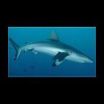(Press-News.org) Demand for seafood from wild fisheries and aquaculture around the world has nearly doubled over the past four decades. In the past several years, major retailers in developed countries have committed to source their seafood from only sustainably certified fisheries and aquaculture, even though it is not clear where that supply will come from.
A team of researchers led by the University of California, Davis, has focused its attention on fishery improvement projects, or FIPs, which are designed to bring seafood from wild fisheries to the certified market, with only a promise of sustainability in the future. They conclude that FIPs need to be fine tuned to ensure that fisheries are delivering on their promises.
The researchers' policy forum titled "Secure Sustainable Seafood from Developing Countries" will be published May 1 in the journal Science.
"We're cautiously optimistic that fishery improvement projects, which fast-track access to international markets, can lead to sustainable fisheries, especially in developing countries," said UC Davis Professor James Sanchirico, associate director of the UC Davis Coastal and Marine Sciences Institute.
Encouraging sustainable seafood:
Retailers like Walmart in the U.S. and Sainsbury's in the U.K. have promised that soon all the fresh, frozen, farmed and wild seafood they sell will come from sustainable sources. Respected, private third-party certifying programs like the Marine Stewardship Council are helping to ensure compliance with meaningful sustainability standards designed to help conserve fish populations and protect oceans.
While many of the sustainability standards have been met by commercial fisheries in the developed world, fisheries overseen by developing countries make up only 7 percent of MSC-certified fisheries, even though these developing-country fisheries account for about half of all seafood entering the international market.
Fishery improvement projects
Fishery improvement projects aim to get fisheries on a path to sustainability and potentially certification by the MSC. These projects involve partnerships between the fishermen and firms up and down the international seafood supply chain. A critical objective of the partnerships is to create market incentives for improvements by allowing seafood from these developing-country fisheries to enter the potentially more lucrative export market for certified seafood.
"It is hoped that the projects will protect marine life and ecosystems in areas where local and national governments have not acted to oversee sustainable practices, while also satisfying the demand for sustainable seafood," said Gabriel Sampson, UC Davis graduate student and lead author of the study.
Potential 'race to the bottom' in standards:
Sampson and colleagues report that seafood from two-thirds of developing-world fisheries enrolled in fishery improvement projects is already being bought by retailers, intending to satisfy their sustainability commitments while making little progress in improving their management.
Fishery management reforms should include data collection and ongoing monitoring, strengthening harvest and access rights to the resources, limits on the catch, and instituting traceability throughout the supply chain, the researchers say. If access to the fisheries is not better regulated, the current efforts by retailers to secure sustainable, wild-caught seafood could stimulate a "race to fish" and ultimately undermine the sustainability claims.
Without the proper safeguards to ensure progress and reforms in fishery improvement projects, fisheries with full sustainability certification could find their market benefits diluted by the increased competition for a share of the global certified seafood market.
Having multiple types of certified seafood in the market could lead to a "race to the bottom" in sustainability standards, unless the fishery improvement projects are carefully monitored to make sure that seafood retailers closely adhere to the sustainable-improvement requirements for market access.
"The retailers and organizations involved with managing fishery improvement projects need to insist on progress toward reforms from the fishery as a condition for purchasing seafood from that fishery," Sanchirico said.
"This would likely lead to more durable conservation and greater assurance for consumers that marketing claims of 'sustainable' seafood are valid," he said.
INFORMATION:
Authors on the commentary were Gabriel Sampson, James N. Sanchirico, and J. Edward Taylor of UC Davis; Cathy A. Roheim of the University of Idaho, Moscow; Simon R. Bush of Wageningen University in the Netherlands; Edward H. Allison of the University of Washington, Seattle; James L. Anderson of the University of Florida, Gainesville; Natalie C. Ban of the University of Victoria in Canada; Rod Fujita of the Environmental Defense Fund; Stacy Jupiter of the Wildlife Conservation Society; and Jono R. Wilson of The Nature Conservancy.
For additional information from non-UC Davis sources contact:
-- Stacy Jupiter, Wildlife Conservation Society, for a "small island developing states" perspective on fishery improvement projects, (+679) 994 6272, sjupiter@wcs.org
-- Cathy Roheim, University of Idaho, for expertise on sustainable seafood markets and fisheries certification, (208) 885-7869, Croheim@uidaho.edu
-- James L. Anderson, University of Florida, for expertise on seafood trade and aquaculture, (352) 294-7679/401-480-9488, james.anderson@ufl.edu
-- Rod Fujita, Environmental Defense Fund, for expertise on fishery management and conservation, (415) 293-6050, rfujita@edf.org
Media contacts:
-- Jim Sanchirico, Environmental Science and Policy, (530) 754-9883, jsanchirico@ucdavis.edu
-- Simon Bush, Wageningen University, the Netherlands, 0317-483310, simon.bush@wur.nl
-- J. Edward Taylor, Agricultural and Resource Economics, (530) 564-0443, jetaylor@ucdavis.edu
-- Pat Bailey, UC Davis News Service, (530) 752-9843, pjbailey@ucdavis.edu
HIV-1 continues to spread globally. While neither a cure, nor an effective vaccine are available, recent focus has been put on 'treatment-for-prevention', which is a method by which treatment is used to reduce the contagiousness of an infected person. A study published this week in PLOS Computational Biology challenges current treatment paradigms in the context of 'treatment for prevention' against HIV-1.
Sulav Duwal, Max von Kleist and their collaborators develop and employ optimal control theory to compute and assess diagnostic-guided vs. pro-active treatment strategies ...
Proteins inside a cell are in constant motion, changing shape continuously in order to carry out their functions. In addition, their multiple component atoms each have individual patterns of motion, making the entire protein a system of non-stop highly complex movement. Understanding how a protein moves is the key to developing drugs that can efficiently interact with it. But because of this complexity, protein motion has been notoriously difficult to study. Scientists at EPFL, IBS-Grenoble, and ENS-Lyon, have developed a new method for studying protein motion by first ...
The fossil record helps to predict which kinds of animals are more likely to go extinct. When combined with information about hotspots of human impacts and climate-change predictions, Smithsonian scientists and colleagues pinpoint animal groups and geographic areas of highest concern for marine conservation in the May 1 issue of Science magazine.
"Just as some groups of people are more prone to health problems like diabetes or heart disease, we can tell from the fossil record which groups of animals are naturally more likely to go extinct," said Aaron O'Dea, paleontologist ...
If you thought that a beetle with a machine gun built into its rear end was something that only exists in sci-fi movies, you should talk to Wendy Moore at the University of Arizona.
Many beetles secrete foul-smelling or bad-tasting chemicals from their abdomens to ward off predators, but bombardier beetles take it a step further. When threatened, they combine chemicals in an explosive chemical reaction chamber in their abdomen to simultaneously synthesize, heat and propel their defensive load as a boiling hot spray, complete with "gun smoke." They can even precisely ...
SEATTLE, Wash. -- More than 1000 dams have been removed across the United States because of safety concerns, sediment buildup, inefficiency or having otherwise outlived usefulness. A paper published today in Science finds that rivers are resilient and respond relatively quickly after a dam is removed.
"The apparent success of dam removal as a means of river restoration is reflected in the increasing number of dams coming down, more than 1,000 in the last 40 years," said lead author of the study Jim O'Connor, geologist with the U.S. Geological Survey. "Rivers quickly erode ...
CAMBRIDGE, Mass--Bombardier beetles, which exist on every continent except Antarctica, have a pretty easy life. Virtually no other animals prey on them, because of one particularly effective defense mechanism: When disturbed or attacked, the beetles produce an internal chemical explosion in their abdomen and then expel a jet of boiling, irritating liquid toward their attackers.
Researchers had been baffled by the half-inch beetles' ability to produce this noxious spray while avoiding any physical damage. But now that conundrum has been solved, thanks to research by a ...
The vivid pigmentation of zebras, the massive jaws of sharks, the fight or flight instinct and the diverse beaks of Darwin's finches. These and other remarkable features of the world's vertebrates stem from a small group of powerful cells, called neural crest cells, but little is known about their origin.
Now Northwestern University scientists propose a new model for how neural crest cells, and thus vertebrates, arose more than 500 million years ago.
The researchers report that, unlike other early embryonic cells that have their potential progressively restricted as ...
ORANGE, Calif. - Researchers in Chapman University's Argyros School of Business and Economics and their collaborators have just published a study on the evolution of yoga in the marketplace. Assistant Professor Gokcen Coskuner-Balli, Ph.D., co-authored the study, which examined how the meaning of yoga transformed in the past three decades. The results show that yoga became decreasingly associated with spirituality and increasingly associated with medicine and fitness. The study argues that the shift in the meanings are due to the changes in how yoga gurus are trained, market ...
Flowering plants, also known as angiosperms, add an allure to the world that is unlike anything else in nature, but more importantly, they sustain us. Most of the fruits, vegetables, grains, beans, nuts, and even herbs and spices that we consume are produced by flowering plants. They all belong to the green plant branch of the tree of life, and a novel DNA analysis software program named MarkerMiner facilitates identification of genes that can be used to elucidate the evolutionary relationships between them.
University of Florida (UF) biologist Srikar Chamala, working ...
Over the past 35 years, California's high-wage workers have seen steady increases in their paychecks. But low-wage workers, 4.8 million strong and about one-third of the state's workforce, earned less in inflation-adjusted dollars in 2014 than they did in 1979, according to an analysis from the University of California, Berkeley.
UC Berkeley researchers analyzing U.S. Census Bureau data at the campus's Center for Labor Research and Education found that low-wage workers, defined as those earning hourly wages of $13.63 or less, have seen steady declines in their inflation-adjusted ...


